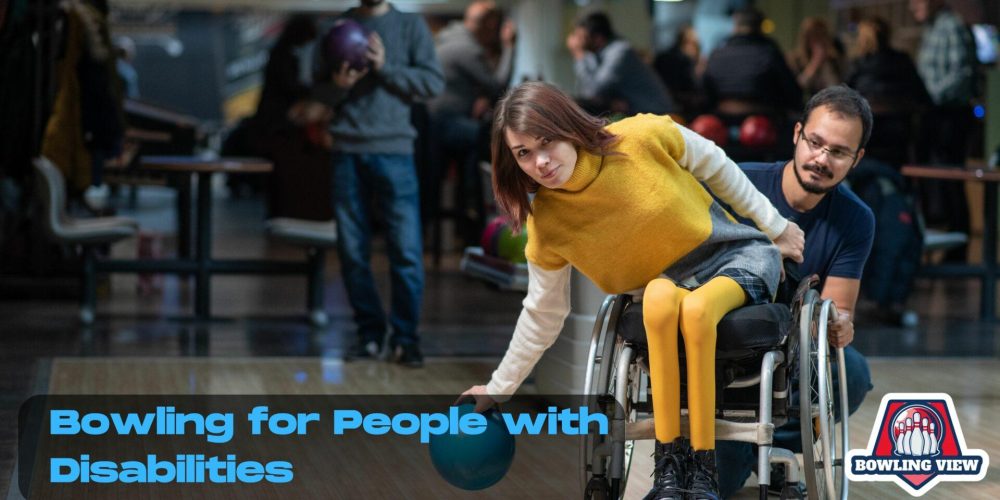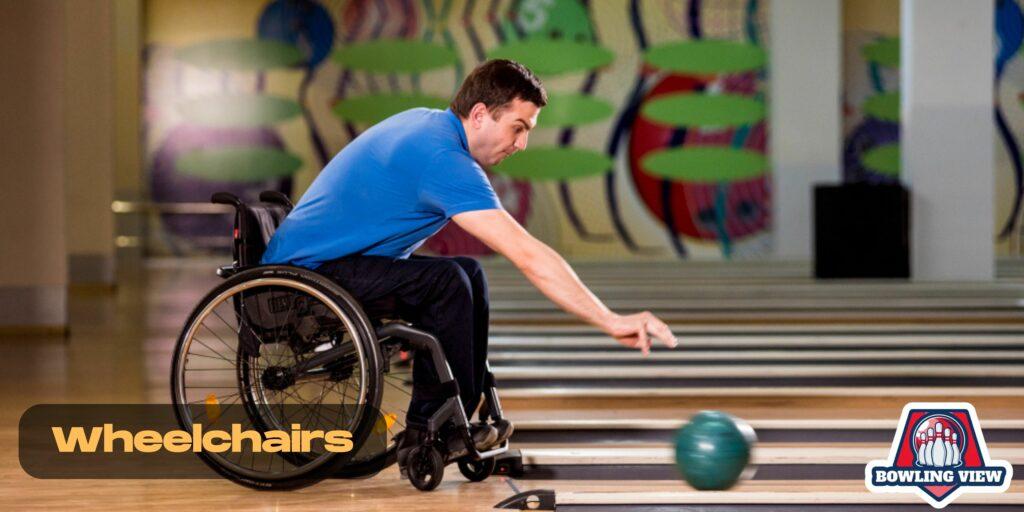Bowling is a fun and engaging sport that provides numerous physical and mental health benefits to its participants. People of all ages and abilities can enjoy the game, including those with disabilities. This article will highlight the ways in which bowling can be made more accessible and enjoyable for individuals with disabilities, and how it can contribute to their overall well-being.
There are numerous adaptive techniques, rules and equipment options available, allowing individuals with various disabilities to participate in bowling. From ramps and rails to specialized balls and gloves, these adaptations ensure that everyone has an equal opportunity to engage in this entertaining sport. Some bowling alleys even offer dedicated events and leagues specifically designed for people with disabilities.
Not only does bowling provide a fun, social atmosphere for people with disabilities, but it also promotes physical activity, coordination, and cognitive skills. The engagement in this sport can lead to improved self-confidence and a sense of accomplishment for those who might face challenges in their daily lives. With the right support and resources, bowling can be a rewarding experience for people with disabilities.
Adaptive Bowling Equipment
Wheelchairs
Adaptive bowling equipment for people with disabilities includes specially designed wheelchairs.
These wheelchairs provide stability and support during the bowling process, allowing players to move comfortably on the lanes. They often feature wider seats, adjustable heights, and secure harnesses.
Ball Ramps
Ball ramps are another essential piece of adaptive bowling equipment. These ramps enable individuals who may have difficulty rolling the ball to angle and release it with ease. Ball ramps come in various styles and can be adjusted to accommodate varying lane heights and player preferences.
Ball Pushers
Ball pushers are specifically designed for individuals who have limited upper body strength. These devices allow players to push the ball down the lane using their body or an additional tool. Ball pushers can be used independently or in conjunction with ball ramps to simplify the act of propelling the ball.
Lightweight Balls
Lightweight balls are a crucial element for making bowling accessible to all players. These balls typically weigh between 6 and 10 pounds, making it easier for individuals with limited strength or gripping capabilities to participate. The reduced weight can also reduce the risk of injury and increase overall enjoyment of the game.
Stick Helpers
Stick helpers, also known as ball guides or assistive devices, provide additional support for players who require it. These items can be attached to wheelchairs or used independently to help maintain balance, guide the ball, and improve accuracy. Stick helpers come in various designs, catering to a wide range of needs and preferences.
The adaptive bowling equipment mentioned above makes the recreational activity more inclusive and enjoyable for people with disabilities. By providing tailored solutions for each player’s needs, everyone can successfully engage in playing this fun and social sport.
Bowling Programs and Organizations
Special Olympics
Special Olympics offers an inclusive environment for individuals with various disabilities, participating in bowling events to promote socialization, confidence, and self-esteem. This non-profit organization supports disabled people in improving their quality of life through recreational exercise and skill development. Members can join Special Olympics Bowling events held at various locations, where accessible facilities cater to the needs of all participants.
Unified Sports® Division
The Unified Sports® Division is an initiative by the Special Olympics that focuses on fostering an inclusive environment for athletes with and without disabilities to compete together.
Members of this program can participate in bowling events with other players that promote socialization and skill development, creating a positive experience for all individuals involved. Providing an accessible and supportive atmosphere enhances the overall quality of life for disabled people.
American Wheelchair Bowling Association (AWBA)
The American Wheelchair Bowling Association (AWBA) is dedicated to providing wheelchair and ambulatory athletes with opportunities to participate in competitive bowling events. This organization actively supports and promotes events for disabled individuals in an accessible and inclusive setting, encouraging members to join, compete, and enjoy the benefits of rehabilitation through recreational exercise.
National Disabled Sporting Associations (NDSA)
The National Disabled Sporting Associations (NDSA) comprises multiple organizations such as the United States Association of Blind Athletes (USADSF), the United States Association for Deaf Sports Federation (USADSF), and others that aim to facilitate and create opportunities for individuals with disabilities to participate in sports, including bowling.
Collaborating with partners like the Special Olympics, these organizations work to provide inclusive opportunities for disabled people to engage in recreational sports, exercise and socialization.
Each of these bowling programs and organizations offers a unique and supportive experience for individuals with disabilities. By participating in these events, members can improve their confidence, self-esteem, and quality of life. Joining one (or more) of four divisions these organizations enables disabled athletes to embark on a journey of personal growth and achievement, while enjoying the camaraderie and competitive spirit of bowling.
Bowling Accessibility and Modifications
Scoring System
Bowling for people with disabilities has been adapted to include an accessible scoring system. This allows individuals of all ages and abilities to enjoy the sport.
Most bowling alleys now offer automated scoring systems that are easy to use for wheelchair users and those with other disabilities. This means that players don’t need to worry about manually scoring their games, allowing them to focus on the fun and excitement of bowling.
Target Bowling
Target bowling is a popular modification for individuals with disabilities who require additional assistance to participate in the game. It involves the use of a lighter ball, typically made of foam or plastic, and smaller pins arranged closer together.
This makes it easier for individuals with limited mobility or strength to hit the pins and provides a more enjoyable experience. Target bowling can also incorporate ramps, ball ramps, or other supportive equipment to facilitate participation.
Access and Accommodations
Accessibility and accommodations are essential for making bowling a truly inclusive sport. Many bowling alleys have implemented:
- Wheelchair ramps: Most bowling alleys now offer wheelchair ramps to provide easy access to the lanes. These ramps are typically designed with a gentle slope, and non-slip surfaces to ensure safe and comfortable use.
- Ball ramps: For individuals who require assistance in rolling the ball down the lane, ball ramps are a valuable tool. The user can position their wheelchair at the top of the ramp and use a gentle push to send the ball towards the pins.
- Adaptive equipment: There are various types of adaptive equipment available to assist individuals with disabilities in enjoying the game of bowling. These may include air-activated ball lift systems, adaptive ball release devices, or specialized gloves and other gripping aids.
In conclusion, bowling accessibility and modifications have made it possible for individuals with disabilities to enjoy the sport. Bowling alleys have adapted to include various accommodations such as automated scoring systems, target bowling, and wheelchair ramps. These changes have ensured that people of all abilities can participate in the game and have a great time with friends and family.
Community Opportunities
Bowling Leagues
Bowling leagues provide a great opportunity for individuals with disabilities to participate in recreational and competitive bowling in their community. Many bowling centers offer adaptive equipment and lane modifications to accommodate various ability levels. Joining a league can help build social skills, foster a sense of belonging, and promote physical activity. Programs that cater to a wide range of ability levels often have options for both beginners and experienced bowlers.
Tournaments
Tournaments are another way to bring the disabled community into the world of bowling. These events typically involve a series of games played over one or several days, with prizes awarded to the top performers. Specific tournament formats may vary, depending on the organizing body and the level of competition. Local and regional tournaments often serve as the foundation for athletes seeking to reach the peak of the sport.
Inclusive Events
Inclusive events, such as special bowling nights or fundraisers, are a fantastic way to bring awareness of the adaptive bowling community and promote a supportive atmosphere. These initiatives can help remove barriers to participation and foster an inviting environment for both disabled and non-disabled bowlers. By hosting inclusive events, bowling centers can demonstrate their commitment to the well-being of all their patrons and foster a sense of unity and collaboration among community members.
Bowling for Visually Impaired Individuals
Adaptive Techniques
Visually impaired individuals can enjoy bowling with the help of adaptive techniques. These techniques allow them to understand the layout of the lanes and adjust their positioning accordingly. One common method is using tactile markers on the floor to guide them in aligning their body with the target pins. This helps them develop a consistent approach, making it easier to improve their skills over time.
Another adaptive technique is using aural cues, such as a sound-emitting device or a sighted guide providing verbal instructions for aligning the body and to indicate when to release the ball. These cues help visually impaired bowlers to maintain their orientation and to enhance their overall game understanding.
Equipment
Ball ramp: A ball ramp is a useful piece of equipment for visually impaired bowlers. It allows them to release the ball on the lane without having to carry or swing it, ensuring a consistent and controlled delivery. The bowler simply places the ball on top of the ramp and gently pushes it forward, allowing gravity to do the rest.
Ball pusher: A ball pusher is another option designed to assist visually impaired individuals in bowling. It is a simple frame with a handle that helps the bowler to guide the ball down the lane. The bowler holds onto the handle and pushes the bowling ball, allowing it to roll smoothly towards the pins.
Scoring system: In wheelchair bowling, a specific scoring system is used to track the players’ progress throughout the game. Visually impaired bowlers often rely on a sighted guide or audio-based scoring systems to follow their scores. These systems provide the players with verbal updates on their scores, ensuring they are aware of their current standing in the game.
In conclusion, visually impaired individuals can actively participate in bowling through the use of adaptive techniques and specialized equipment. The incorporation of these tools allows them to fully enjoy and play the sport and develop their skills, making it an inclusive and enjoyable experience for all.
Benefits of Bowling for Individuals with Disabilities
Physical Health
Bowling is a recreational exercise that can help improve the physical health of individuals with disabilities. The activity involves using various muscle groups, improving strength and coordination. Additionally, it can help increase endurance and flexibility, contributing to an overall better quality of life.
Mental Health
Participating in bowling can have a positive effect on mental health for people with disabilities. Engaging in this sport can help boost confidence and self-esteem, as individuals recognize their abilities and overcome challenges. Furthermore, it provides a sense of achievement and accomplishment, increasing overall life satisfaction and well-being.
Social Benefits
Bowling fosters a sense of community and social inclusion, as the sport can be played by the same teams of individuals with varying levels of ability. This encourages social interaction and the development of friendships. Additionally, being part of a community reduces feelings of isolation and promotes the sharing of experiences, resources, and support among individuals with disabilities.



